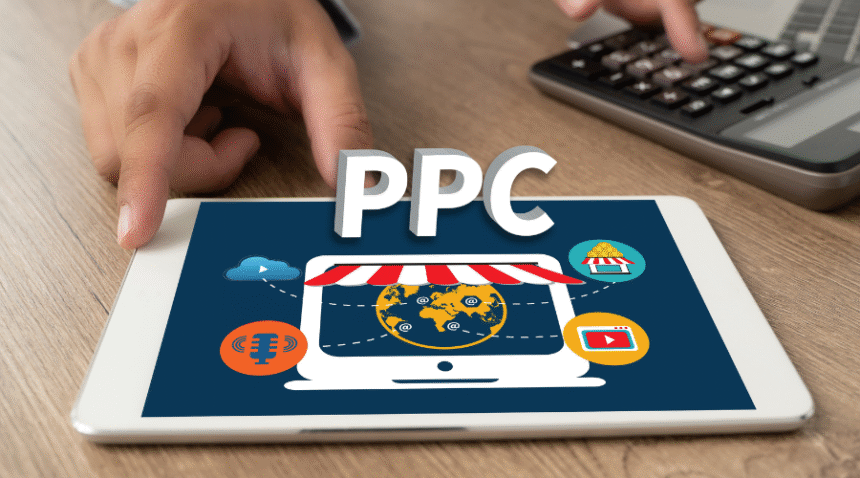India’s e-commerce market, projected to hit $200 billion by 2026, is a battlefield where brands fight for every click. Pay-per-click (PPC) advertising is a sharp weapon done right; it drives sales without burning cash. Unlike organic growth, PPC delivers instant visibility, but squeezing out the maximum return on investment (ROI) takes strategy, not just budget. For Indian brands, where mobile shoppers dominate (70% in 2024), mastering PPC is necessary to turn clicks into conversions. Let’s break down how to make every rupee count with PPC ads.
Why PPC Matters for E-commerce
PPC puts your brand front and centre through Google Shopping ads or Amazon Sponsored Products. You pay only when someone clicks, making it cost-efficient if targeted well. A 2023 Google study showed PPC ads boost Indian e-commerce sales by 15-20% when optimized. With 68% of shoppers starting searches on Google or marketplaces, per 2024 data, skipping PPC means handing sales to rivals. Its precision marketing reaches Diwali gift hunters in Delhi, not random browsers.
Step 1: Nail Your Keyword Game
Keywords are the backbone. Generic terms like “shoes” burn cash go specific: “men’s leather shoes in Mumbai.” Use tools like Google Keyword Planner or SEMrush to find high-intent phrases like “buy silk saree online” and beats “saree.” A Chennai jewellery brand I know cut costs 25% by targeting “gold earrings under 10K.” Long-tail keywords with three to four words convert better; 2024 stats show they drive 70% of PPC sales. Bid smart focus on exact match for control.
Step 2: Craft Compelling Ad Copy
Your ad’s got seconds to hook. Highlight value “Free Shipping on Kurtas Today!” and urgency: “Diwali Sale Ends Tonight.” Include keywords naturally; a “Best Laptops in Bengaluru” ad outpolled “Shop Laptops” by 30% for a friend’s store. Use extensions price, ratings, or “COD Available” since 60% of Indian buyers want payment flexibility, per 2023 surveys. Clear, punchy copy turns scrollers into clickers.
Step 3: Optimize Landing Pages
Clicks are useless if your page flops. A slow, cluttered landing page kills 50% of conversions, according to Google’s 2024 data. Ensure it’s mobile-friendly 70% shop on phones. Match the ad’s promise: an advertisement for “affordable watches” should land on watches, not your homepage. A Hyderabad gadget shop added a sticky “Buy Now” button, and conversions rose 22%. Fast load times (under 3 seconds) and clear CTAs are non-negotiable.
Step 4: Leverage Audience Targeting
PPC isn’t spray-and-pray target-tight. Platforms like Google Ads let you hone in on location (Pune shoppers), interests (tech buffs), or behaviour (cart abandoners). Remarketing ads hitting folks who visited your site convert 40% better, per 2024 stats. A Kolkata fashion brand retargeted “saree browsers” with “10% Off Today” sales spiked 18%. Layering demographics with festive timing (Rakhi, Holi) is gold in India.
Step 5: Use Smart Bidding
Manual bidding is a slog; AI’s smarter. Google’s Target ROAS (return on ad spend) or Amazon’s Dynamic Bidding tweak bids in real-time. A friend’s spice store set a 500% ROAS goal, click costs dropped 15%, and sales held steady. Test strategies maximize clicks for brand awareness and conversions for quick wins. Monitor daily; a 2023 report says 30% of PPC budgets waste on unoptimized bids.
Also Read: The Pros and Cons of Paid Advertising for Real Estate Marketing
Step 6: Track and Analyze Performance
Data’s your co-pilot. Google Analytics or Amazon’s ad dashboard shows what’s cooking in click-through rates (CTR), cost-per-click (CPC), and conversions. A Delhi skincare brand found “organic creams” ads had 5% CTR, but low sales switched to “acne cream,” doubled ROI. Check weekly; 2024 Shopify stats say brands tweaking campaigns monthly boost ROI by 25%. Cut losers, scale winners.
Step 7: Test and Refine Ads
Never set and forget. A/B test everything, including headlines, images, and CTAs. “Shop Now” vs. “Grab Deals” shifted a shoe store’s CTR by 10%. Rotate Creative’s festive visuals (lamps for Diwali) outperform stale ones. A Coimbatore textile brand swapped red banners for gold clicks, soaring 12%. Small tweaks compound; 2023 data shows testing lifts ROI 15-20%.
Also Read: Why High-Quality Visual Content is Essential for Online Stores
Real-World Wins
A Mumbai electronics shop used PPC remarketing cart recovery rose 35%, and ad spending fell 10%. A Jaipur handicraft brand targeted “gift hampers near me” festive sales hit ₹8Cr, ROI up 28%. These align with 2024 Google trends: optimized PPC campaigns yield 2-3x returns. It’s not luck. It’s math and hustle.
Also Read: Myntra Fashion: The Latest Trends and Styles on the Online Fashion Platform
Avoid the Traps
Broad keywords? Money pit narrows it down. Ignoring negatives like “free” when you’re not wasting clicks; a 2024 study says 20% of budgets leak here. Skimp on tracking? You’re blind 65% of failed campaigns lack analytics, per WordStream. India’s trust-driven market hates vague ads to be clear, or 70% bounce, says Baymard. Refresh for seasons; old Holi ads in July scream lazy.
Your PPC Power Move
In India’s $200-billion e-commerce sprint, PPC done right maxes ROI. Pick laser-sharp keywords, write killer copy, optimize pages, target tight, bid smart, track hard, and test often. It’s not about big budgets ₹10K can outshine ₹1L if you’re precise. With mobile-first shoppers and festive peaks, PPC’s your edge to convert clicks into cash. Ready to launch your campaign?


Leave a Reply
You must be logged in to post a comment.